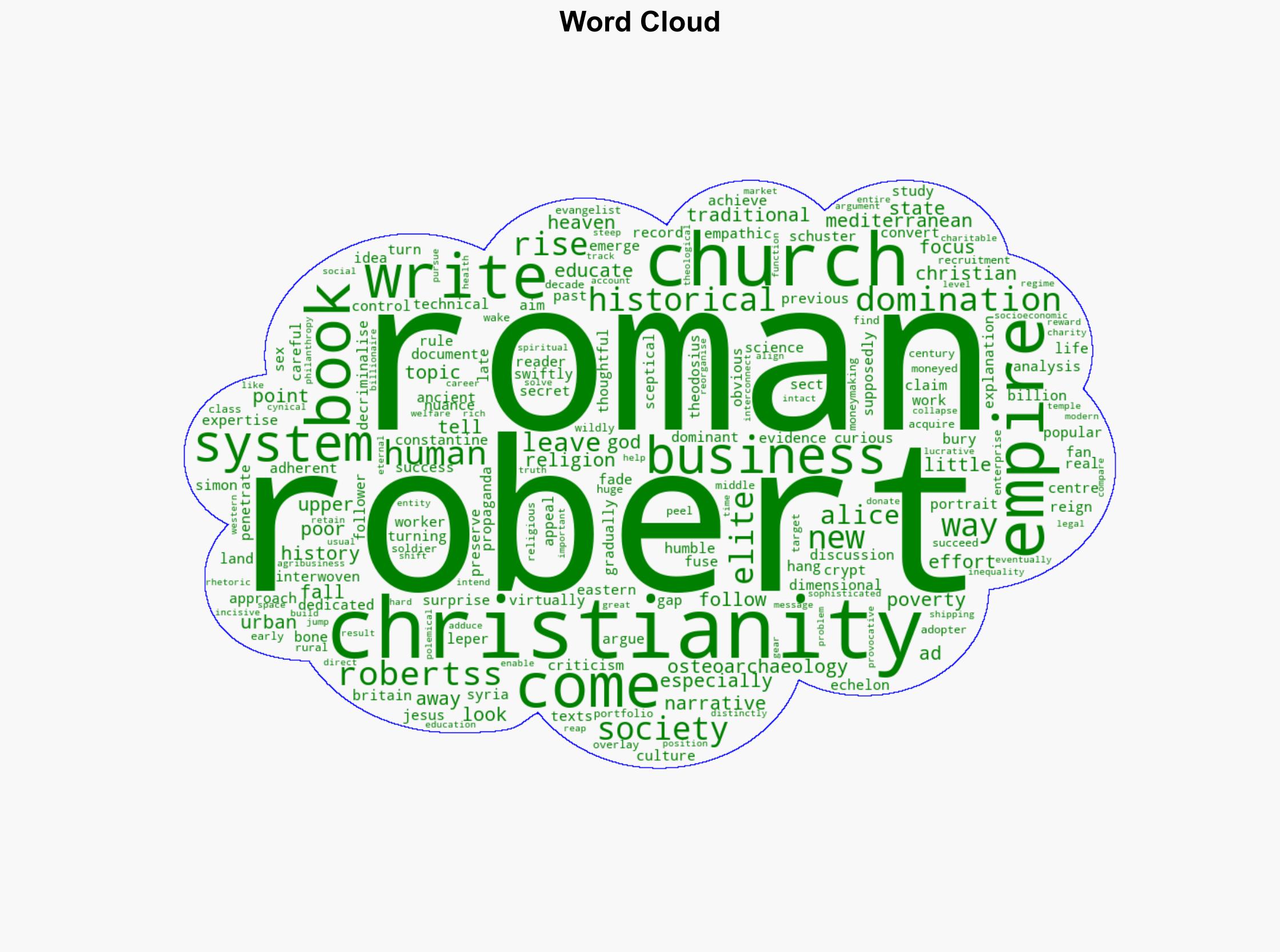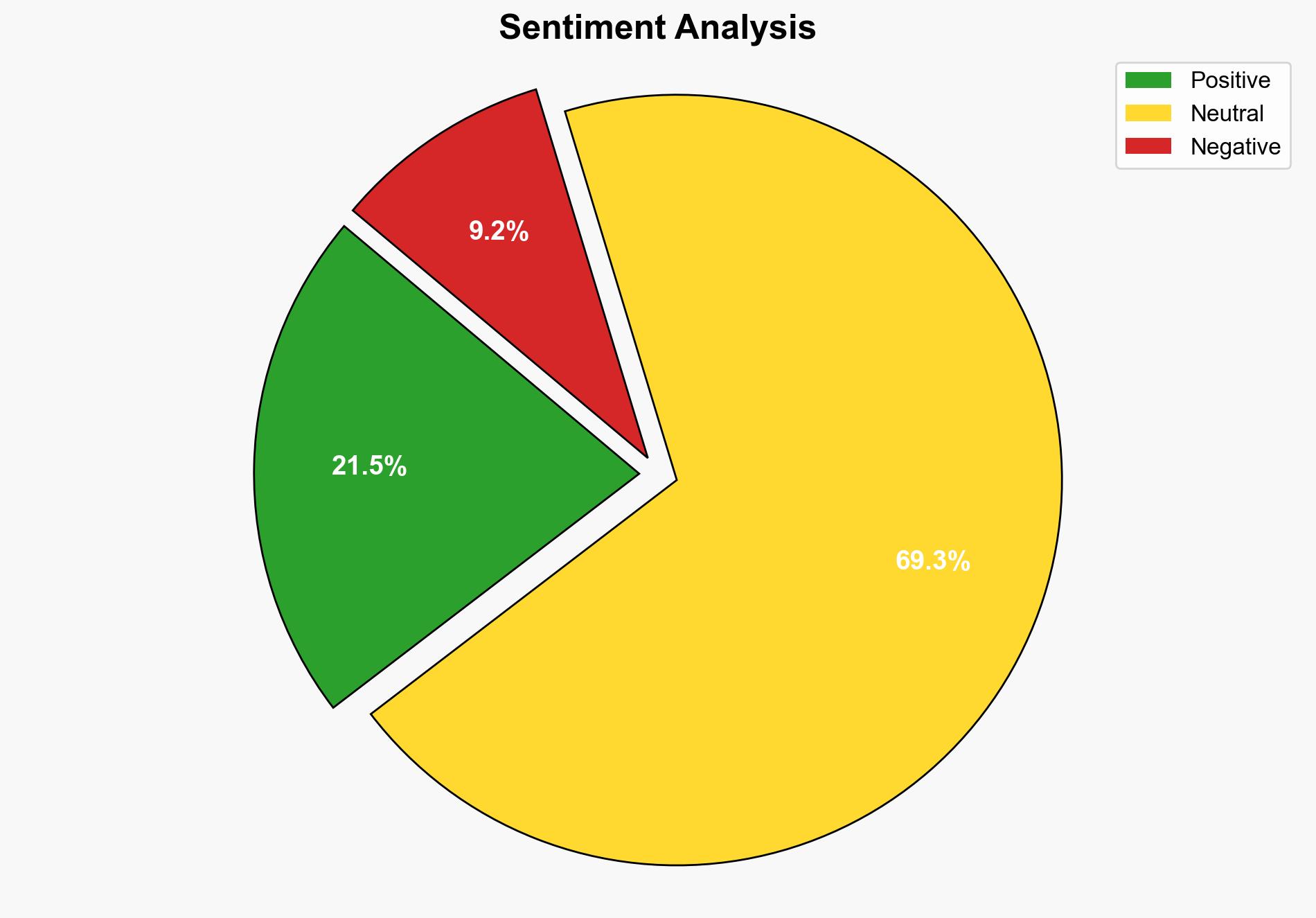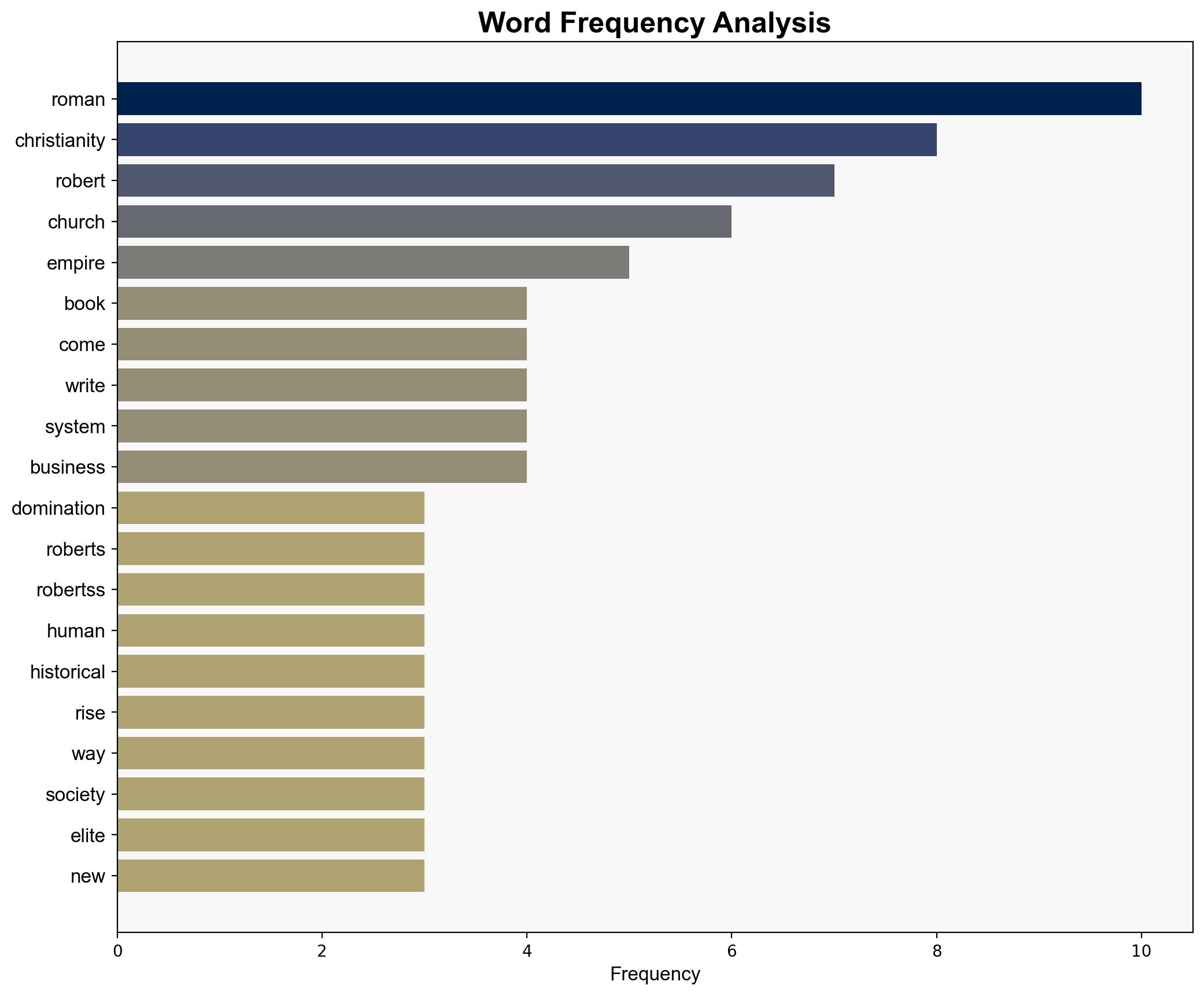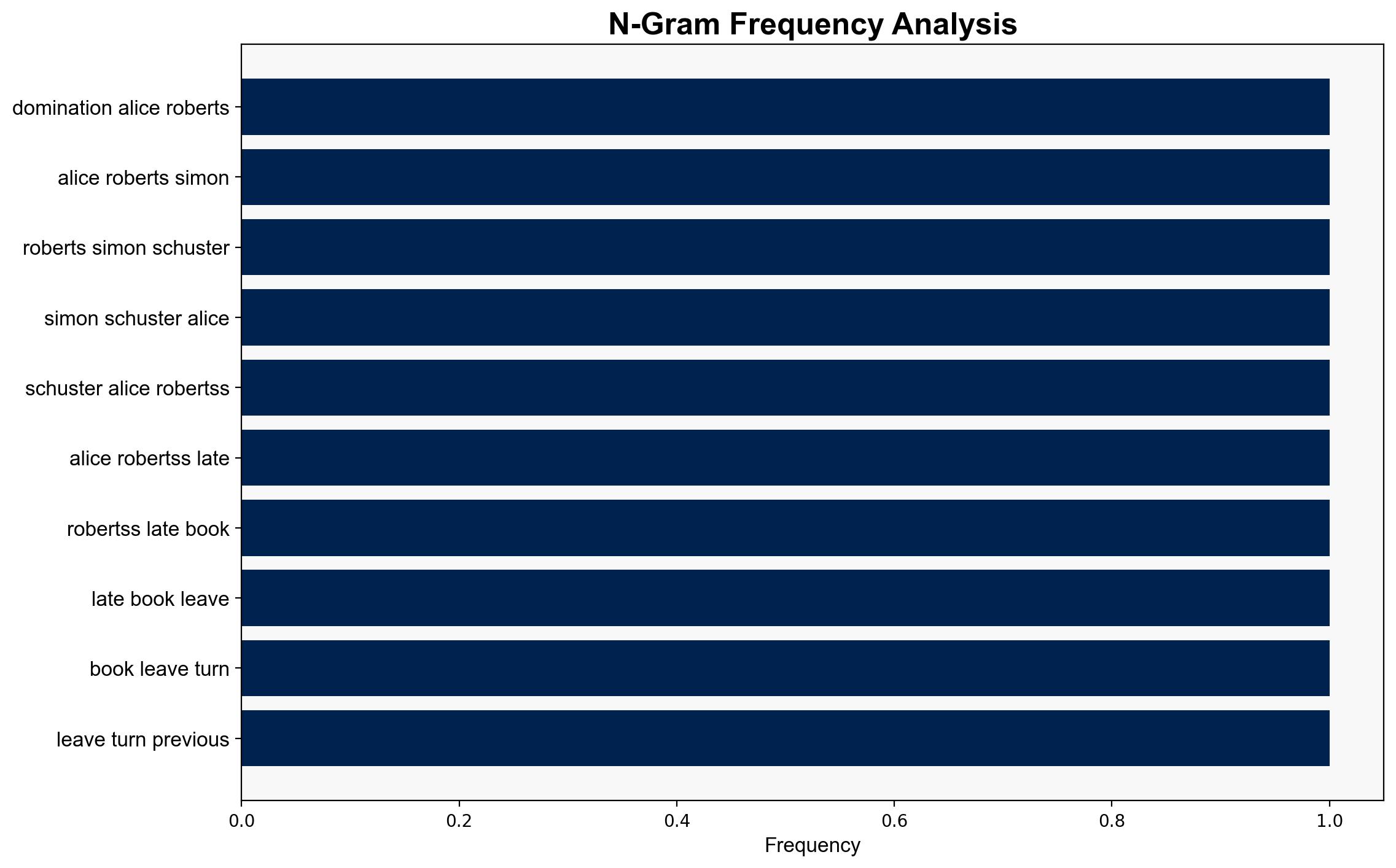Alice Roberts investigates the unstoppable rise of Christianity – New Scientist
Published on: 2025-08-27
Intelligence Report: Alice Roberts investigates the unstoppable rise of Christianity – New Scientist
1. BLUF (Bottom Line Up Front)
The most supported hypothesis is that Christianity’s rise was significantly influenced by its strategic penetration into the Roman elite, transforming into a socio-economic system that paralleled state functions. Confidence level: Moderate. Recommended action: Further interdisciplinary research combining historical, socio-economic, and archaeological data to refine understanding of early Christian expansion dynamics.
2. Competing Hypotheses
1. **Hypothesis A**: Christianity’s rise was primarily due to its appeal to the marginalized and its spiritual message, which resonated across different strata of society, leading to widespread adoption.
2. **Hypothesis B**: Christianity’s success was largely due to its strategic infiltration and adoption by the Roman elite, transforming into a socio-economic system that provided state-like functions, thus ensuring its dominance.
Using ACH 2.0, Hypothesis B is better supported due to evidence of Christianity’s integration into Roman elite circles and its development into a complex socio-economic network, as highlighted by Roberts.
3. Key Assumptions and Red Flags
– **Assumptions**: Hypothesis A assumes a universal appeal of Christianity’s spiritual message, while Hypothesis B assumes strategic elite adoption was pivotal.
– **Red Flags**: Lack of direct evidence for the exact mechanisms of elite conversion and the extent of Christianity’s socio-economic functions.
– **Blind Spots**: Potential underestimation of the role of traditional Roman religious practices and political dynamics in Christianity’s rise.
4. Implications and Strategic Risks
– **Patterns**: The transformation of religious movements into socio-political entities can alter power structures, as seen with Christianity.
– **Cascading Threats**: Misinterpretation of historical religious dynamics could lead to flawed analogies in modern geopolitical strategies.
– **Potential Escalation**: Overemphasis on elite influence might overshadow grassroots movements’ roles in historical and current contexts.
5. Recommendations and Outlook
- Encourage interdisciplinary studies to explore the socio-economic impacts of religious movements historically and in contemporary settings.
- Best-case scenario: Enhanced understanding of historical religious dynamics informs current socio-political strategies.
- Worst-case scenario: Misinterpretation leads to strategic missteps in managing religious and socio-political movements.
- Most likely scenario: Incremental advancements in historical understanding with moderate impact on contemporary strategies.
6. Key Individuals and Entities
– Alice Roberts: Author and investigator of Christianity’s rise.
– Constantine: Roman Emperor associated with the decriminalization of Christianity.
– Theodosius: Roman Emperor who made Christianity the state religion.
7. Thematic Tags
historical analysis, religious dynamics, socio-economic systems, Roman Empire, strategic influence





